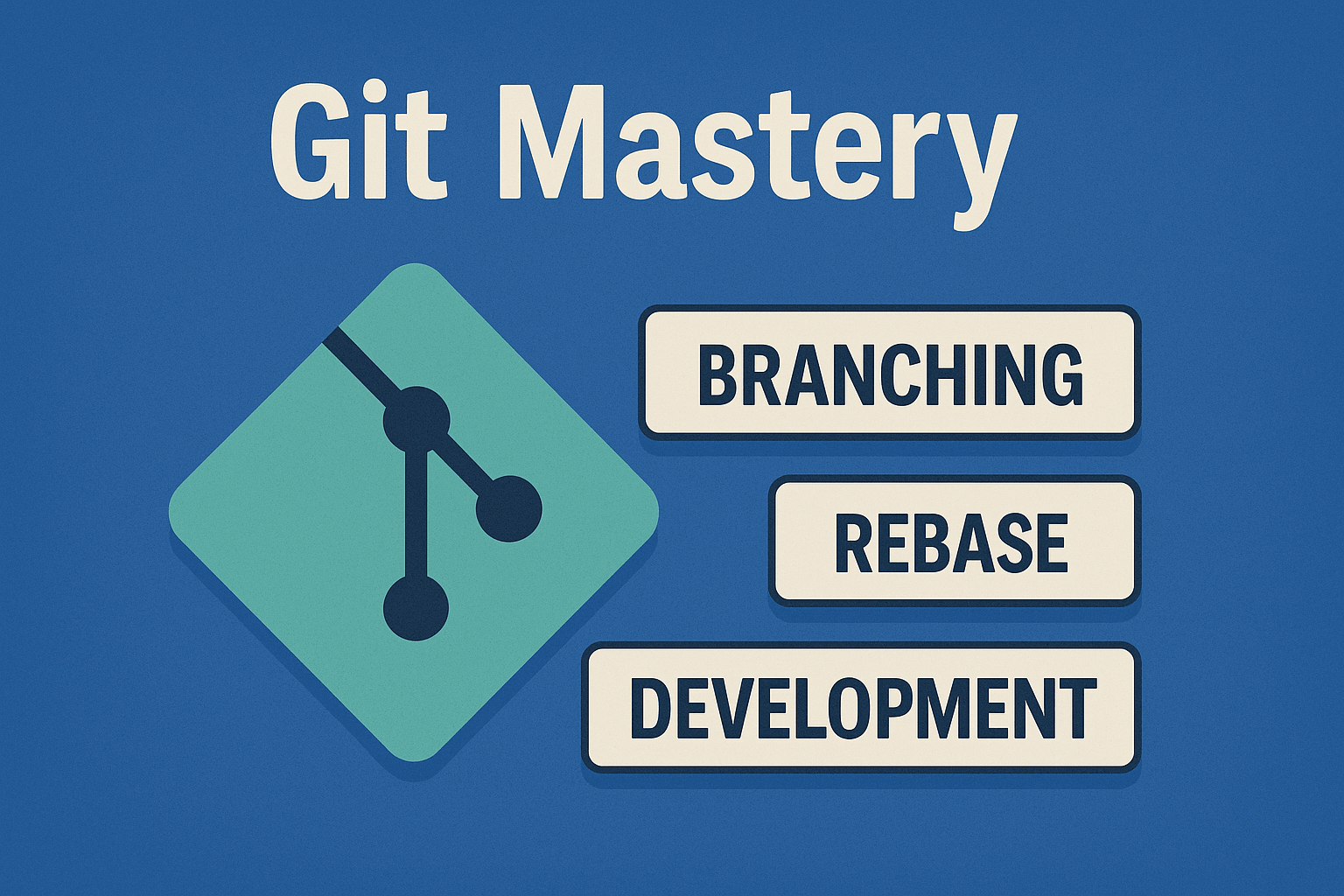Git Mastery

Git has become fundamental for software development, allowing teams to collaborate seamlessly. Getting started with git is easy and as always doing so poorly will create a mess of commits and branches. This article outlines essential Git strategies focusing on a robust branching model (main, develop, and workflow branches), the importance of clear commit messages, the ability to rebase your commits to keep them clean and the proper way of merging your work once finished. These practices are about fostering an efficient, clean and maintainable development environment.
Branching
A well-defined branching strategy provides structure and clarity to the development process. The main–develop-workflow branch model offers a solid foundation for most projects:
- Main: The main branch should always represent the production-ready state of the codebase. direct commits should be strictly forbidden. Every commit on main should correspond to a tagged release, providing a clear and immutable history of deployed versions.
- Develop: The develop branch serves as the central integration point for all ongoing development efforts. Developers merge their completed feature branches, bug fixes, and improvements into develop. This branch reflects the latest state of the project under active development, acting as a staging area before release.
- Workflow: For each new feature, bug fix, or improvement, developers should create dedicated, short-lived branches branching off from the latest develop. This isolation prevents conflicts and allows for focused development. Naming conventions like feature/user-authentication, bugfix/login-error, or improvement/performance-optimization enhance clarity and organization. These branches should be kept concise and merged back into develop once the work is complete.
Commits
The commit history is a project’s narrative. Clear, concise, and informative commit messages are crucial for understanding the evolution of the codebase and facilitating collaboration:
- Atomic Commits: Each commit should represent a single, logical change. Avoid bundling unrelated modifications into a single commit. This makes it easier to understand the purpose of each change and to revert specific modifications if necessary.
- Commit Messages: The commit title should clearly indicate what it is doing, having a readable history where it is clear where, what was done. The message of the commit can be used to add any other needed information
- Consistency is Key: Establish and adhere to a consistent commit message format across the team. This improves readability and makes it easier to parse the commit history programmatically if needed.
Rebasing
Integrating changes from feature branches into develop requires careful consideration. Rebasing offers a powerful way to maintain a clean and linear project history:
- Stay up to date: Rebase your feature branch on top of the develop branch is an easy way for you to get access to all the new code written while also giving you an option to resolve conflicts without creating new commits.
- Fix mistakes: Every commit you make has a chance of having a mistake in it. With rebasing you can edit a specific commit, or create a new one that is merged with fixup.
- Avoid Rebasing Public History: Never rebase commits that have already been pushed to a shared branch that others are working on. This can lead to significant confusion and potential data loss.
Merge Requests
Merge requests are the way to merge code to your shared branches.
- Initiate Early and Often: Create merge requests as soon as a logical unit of work is complete, even if it’s not fully finished. This allows for early feedback and facilitates iterative development.
- Clear and Informative Descriptions: Provide a comprehensive description in your merge request, outlining the purpose of the changes, any relevant context, and potential areas of concern. Reference any related issues or user stories.
- Constructive Feedback: Code reviews should focus on providing constructive feedback aimed at improving code quality, maintainability, and adherence to coding standards. Be specific, respectful, and offer suggestions for improvement.
- Engage in Discussion: Merge requests are a platform for discussion. Developers should actively respond to comments, clarify their decisions, and iterate on their code based on the feedback received.
- Iterative Refinement: Use the merge request process to refine the code. Address feedback by making necessary changes and pushing updated commits to the branch. Avoid creating numerous small ”fix” commits directly on the branch. Instead, consider amending previous commits or using interactive rebasing to consolidate changes before the final merge.
Interactive Rebasing
A cluttered commit history hinders understanding and maintainability. Git provides tools to refine the commit history of your local branches before sharing:
Interactive Rebasing for Historical Refinement: For more complex scenarios involving multiple commits, interactive rebasing is invaluable. It allows you to:
- Reorder Commits: Arrange commits in a logical sequence.
- Squash Commits: Combine multiple related commits into a single, more comprehensive commit.
- Reword Commit Messages: Improve the clarity and conciseness of commit messages.
- Edit Commits: Modify the content of specific commits.
- Drop Commits: Remove unnecessary or erroneous commits.
Caution: Only perform interactive rebasing on local branches that have not been shared with others. Rewriting the history of shared branches can cause significant problems for your team.
Conclusion
By establishing a clear branching strategy, emphasizing meaningful commits, making changes with rebasing, and leveraging merge requests for thorough review, teams can maintain a clean and understandable git history. These practices lead to a more organized, maintainable, and understandable codebase, ultimately contributing to more efficient development cycles and higher-quality software. Embracing these principles transforms Git from a mere version control system into a powerful enabler of effective teamwork and sustainable software development.